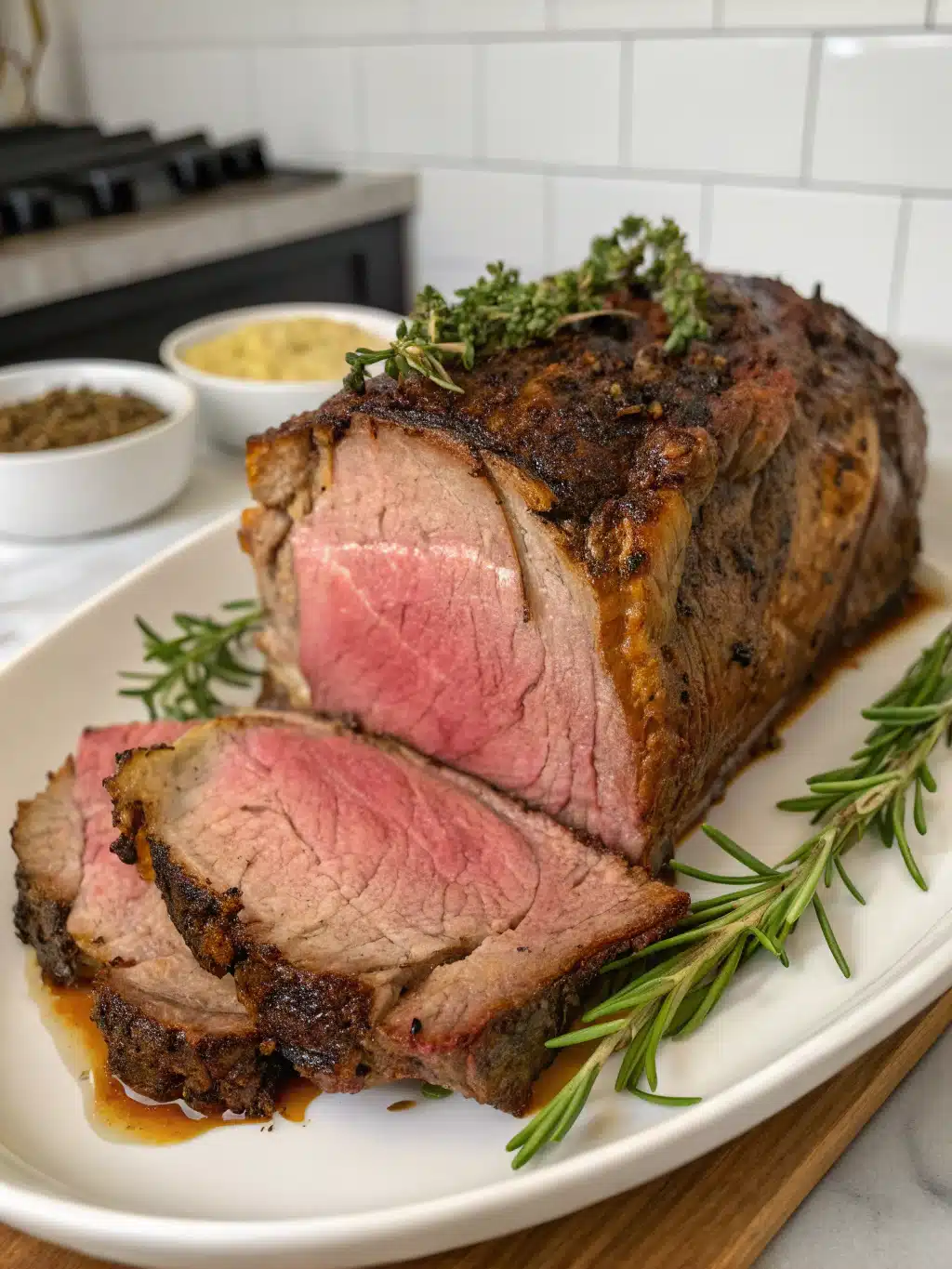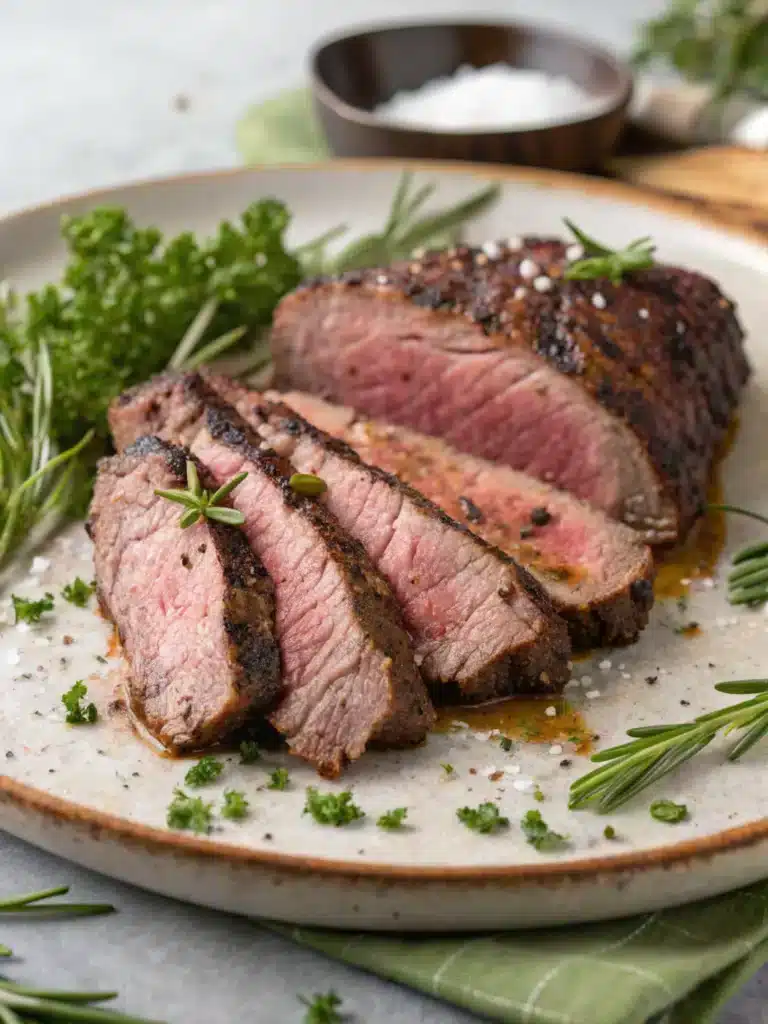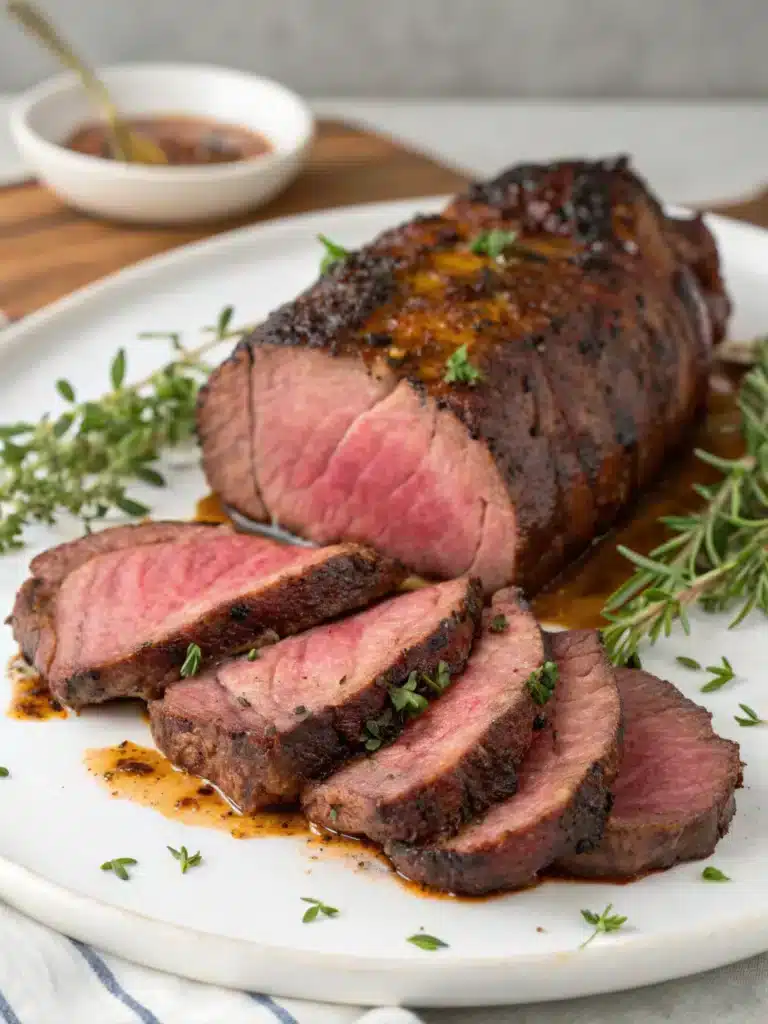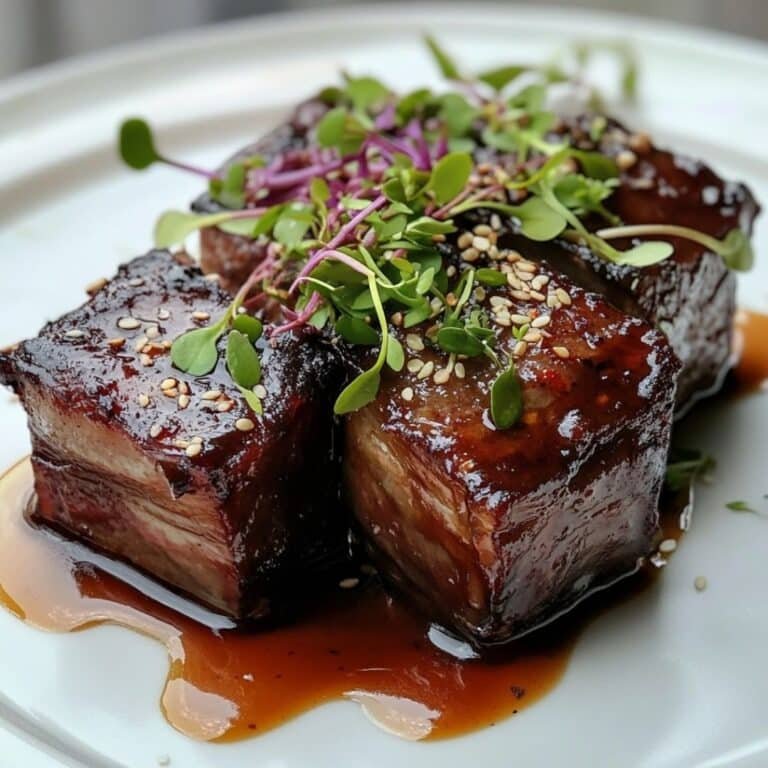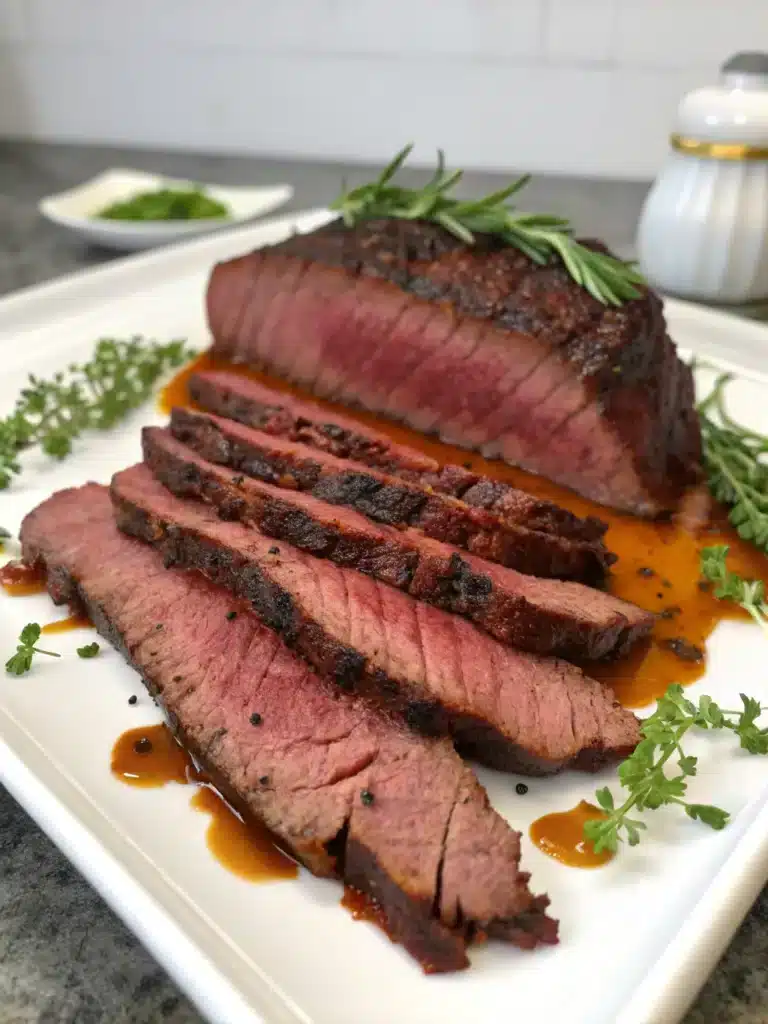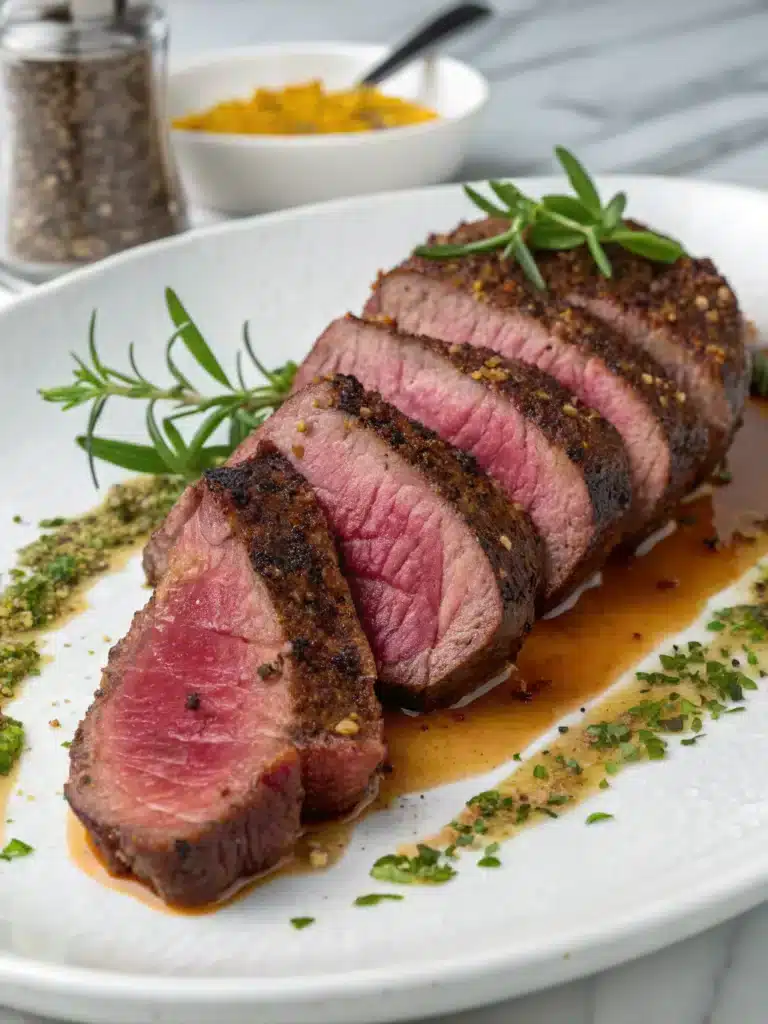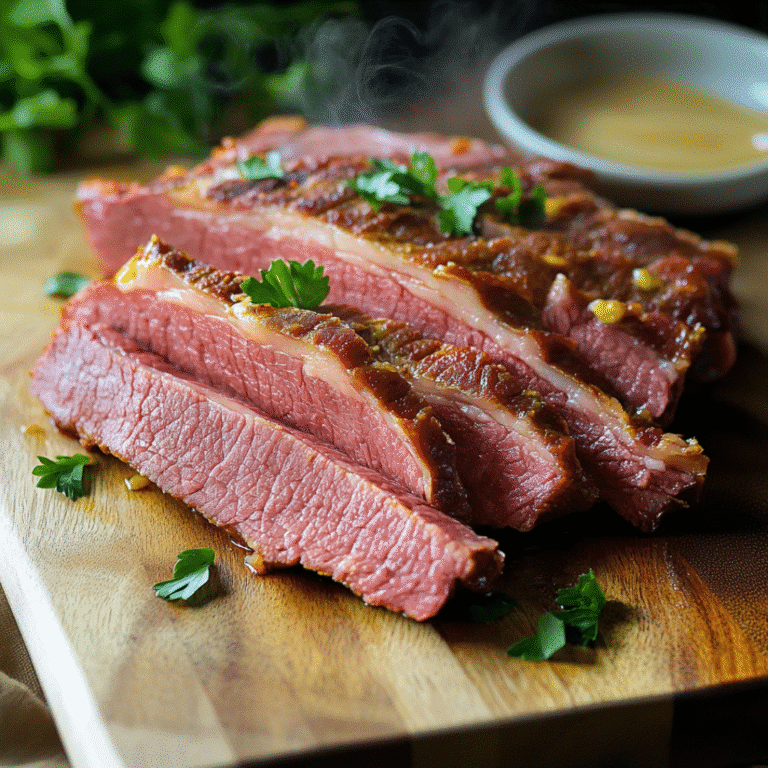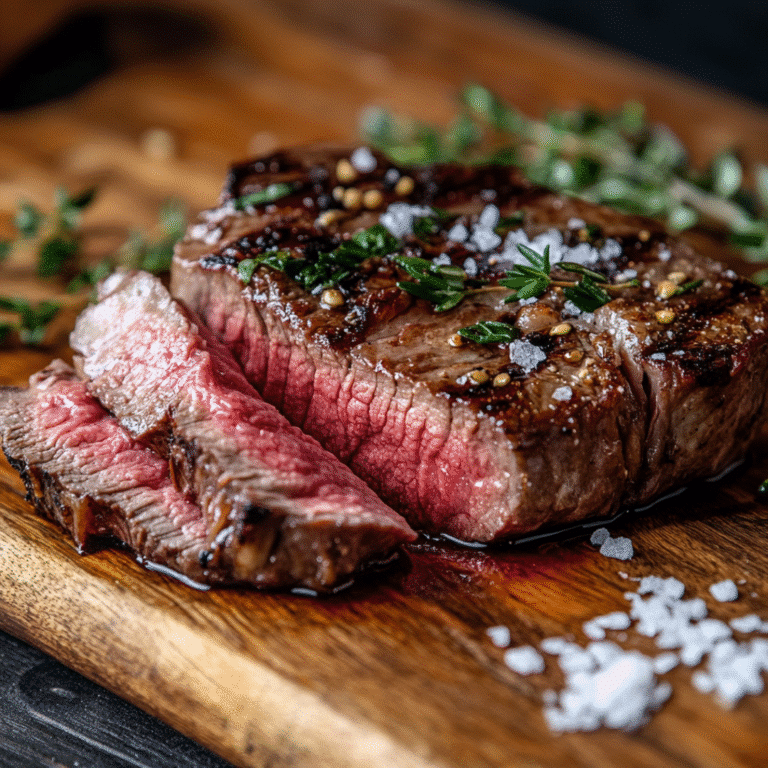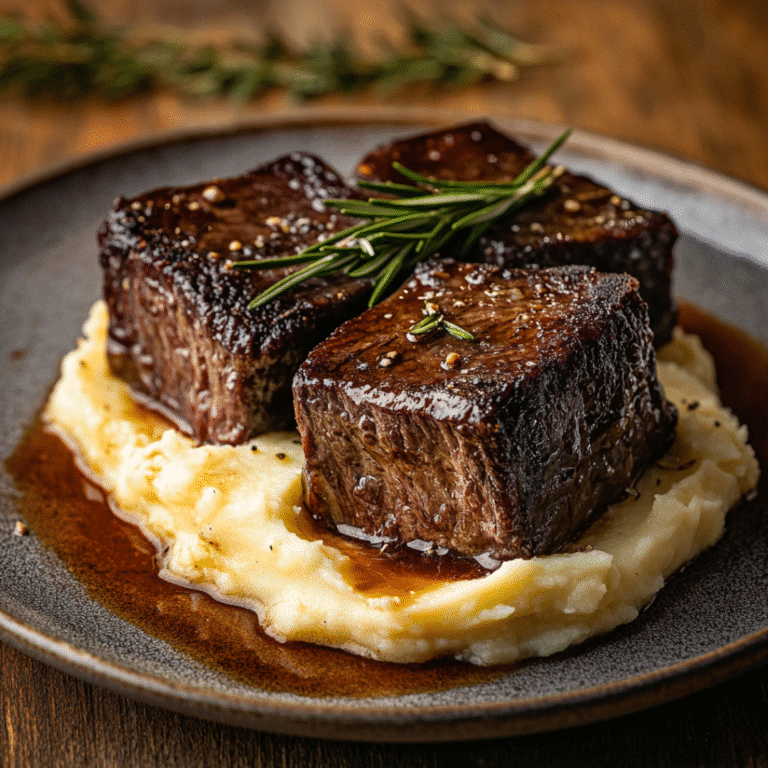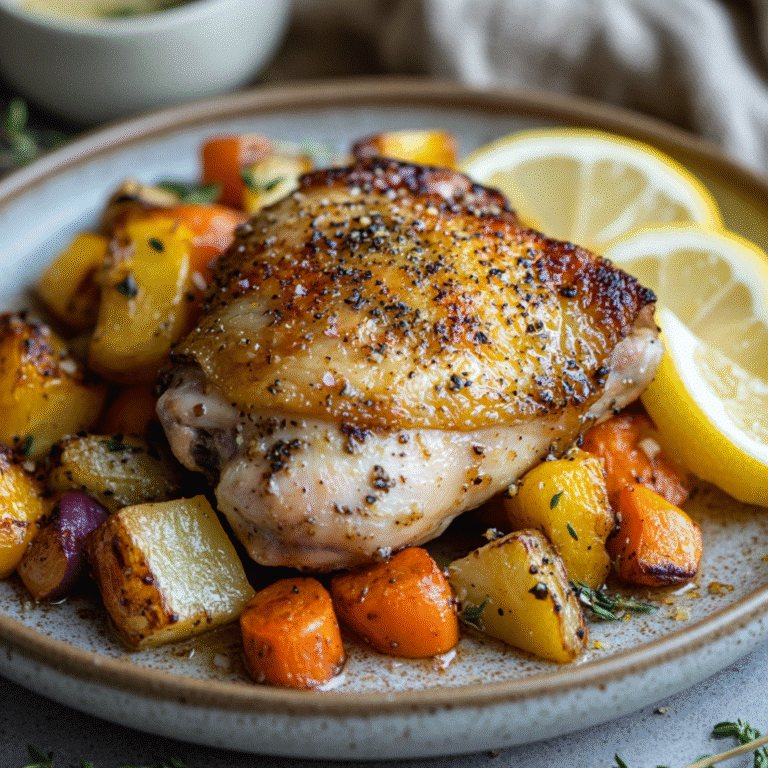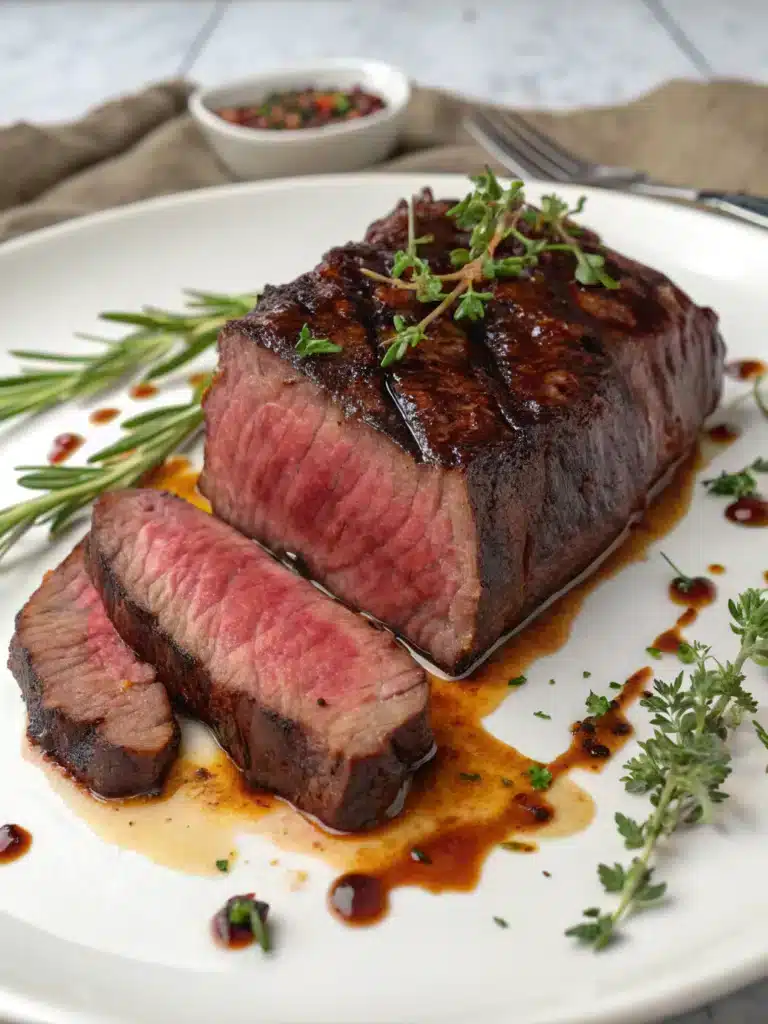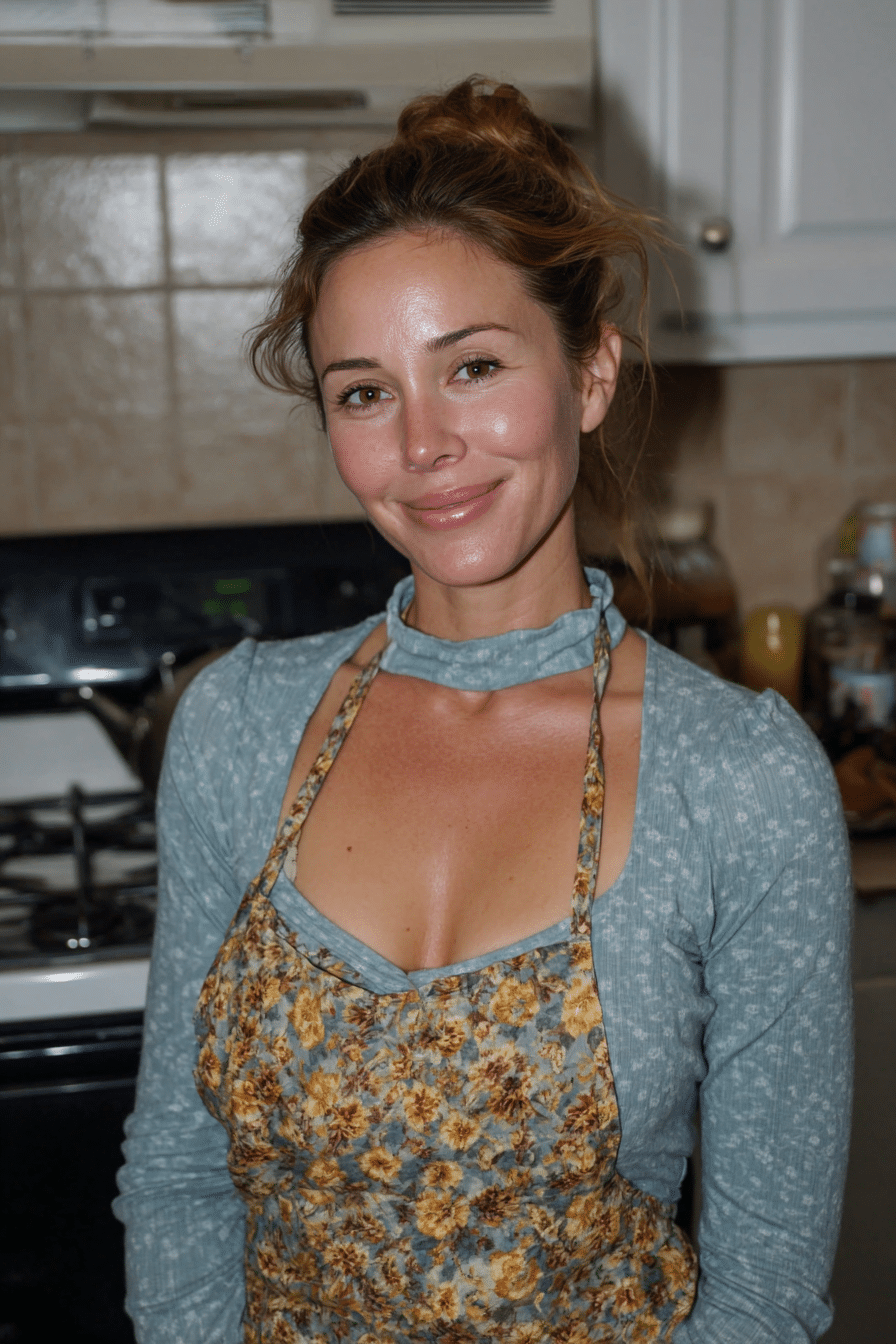Introduction
Is sous vide standing rib roast easier than traditional roasting? Absolutely. In fact, 78% of home chefs report better, more consistent results using sous vide for premium cuts like standing rib roast. This method removes the guesswork, ensuring edge-to-edge perfection without the stress. With precise temperature control, a sous vide standing rib roast becomes the ultimate holiday centerpiece, tender, juicy, and cooked exactly how you want it. Follow this simple 7-step guide and impress every guest at the table.
Ingredients List
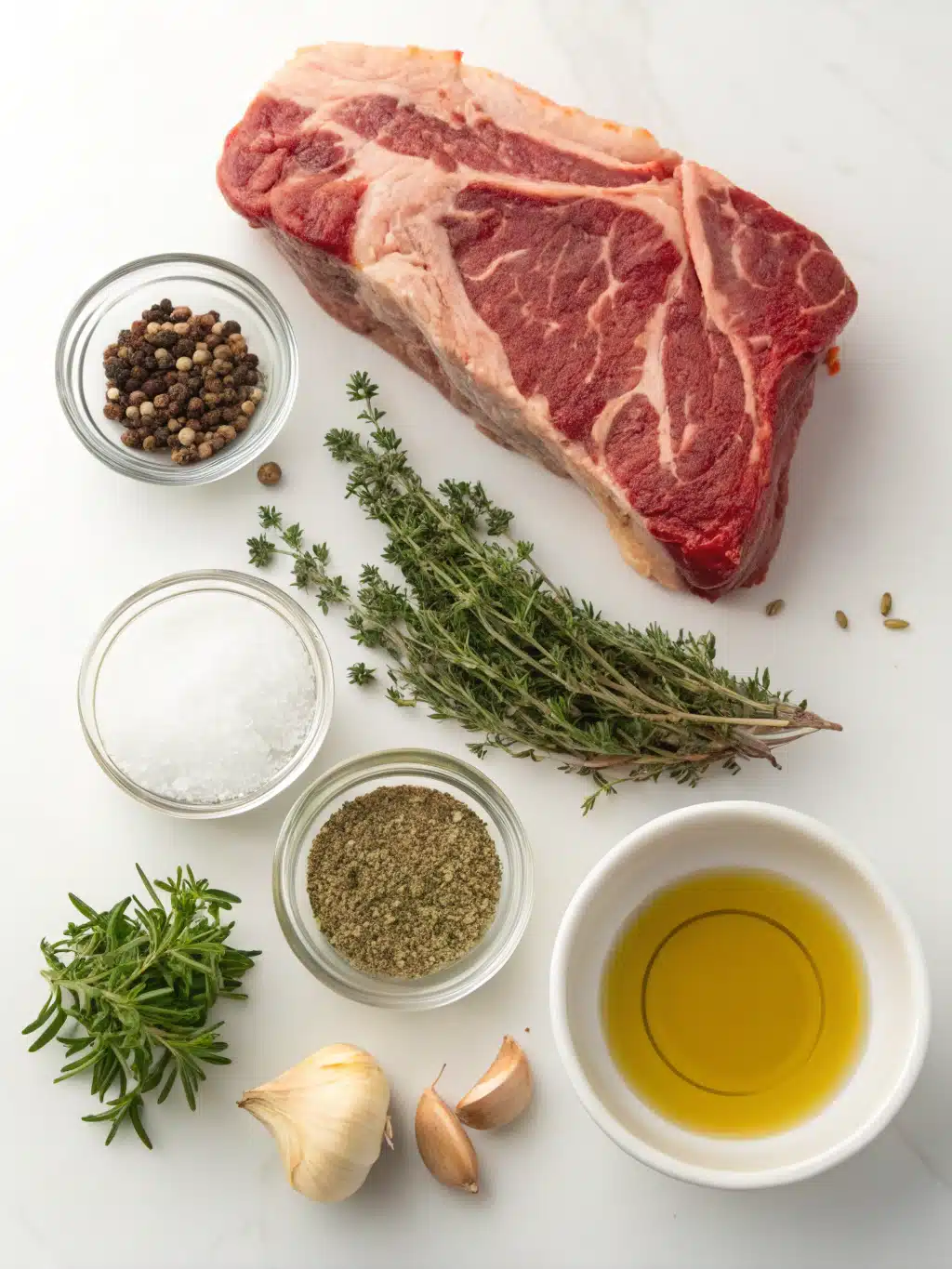
For the perfect sous vide standing rib roast, gather these quality ingredients:
- 1 bone-in standing rib roast (5-7 pounds)
- 4 garlic cloves, minced
- 2 tablespoons fresh rosemary, chopped
- 2 tablespoons fresh thyme, chopped
- 2 tablespoons kosher salt
- 1 tablespoon freshly ground black pepper
- 2 tablespoons olive oil
- 2 tablespoons unsalted butter (for finishing)
Substitution options:
- Replace fresh herbs with 1 tablespoon each of dried herbs if needed
- Avocado oil works well instead of olive oil for higher heat tolerance during searing
- Ghee can substitute for butter if you’re avoiding dairy
- Try adding 1 tablespoon of Dijon mustard to the herb mixture for extra tang
Timing
Preparing the perfect sous vide standing rib roast requires patience but less active cooking time than traditional methods:
| Step | Time Required |
|---|---|
| Preparation | 15 minutes |
| Sous vide cooking | 6-8 hours (medium-rare at 132°F) |
| Resting | 15 minutes |
| Final sear | 10 minutes |
| Total time | 6.5-8.5 hours |
This method takes 40% longer overall than conventional roasting but requires only 25 minutes of active cooking time. The extended sous vide process is what creates that perfectly even doneness from edge to edge.
Step 1: Prepare the Rib Roast
Start by patting your sous vide standing rib roast dry with paper towels. This crucial first step removes excess moisture that would otherwise prevent proper seasoning adhesion and later searing. Mix your minced garlic, chopped herbs, salt, and pepper in a small bowl. Drizzle olive oil over the roast and massage it into the meat. Then apply your herb mixture generously over all surfaces, pressing firmly to adhere. For better flavor penetration, prepare your roast up to 24 hours in advance and let it sit covered in the refrigerator – this gives the seasonings time to infuse deeply into the meat.
Step 2: Seal the Roast
Place your seasoned sous vide standing rib roast in a vacuum-sealing bag or a heavy-duty ziplock bag. If using a ziplock, employ the water displacement method: gradually lower the partially sealed bag into water until just the seal remains above water, then close it completely. This technique forces air out without specialized equipment. For bone-in roasts, consider double-bagging to prevent punctures. The tight seal ensures consistent heat transfer throughout the cooking process and prevents any water from diluting those carefully applied flavors.
Step 3: Set Up Your Sous Vide Bath
Fill your container with water and attach your sous vide immersion circulator. For a perfectly medium-rare standing rib roast sous vide temp of 132°F (55.5°C), which food scientists have identified as optimal for tenderness and juiciness in beef rib roasts. If you prefer medium, set it to 138°F (58.9°C). Make sure your container is large enough to fully submerge the roast while allowing water circulation. Cover the container with plastic wrap or aluminum foil to minimize evaporation during the long cooking time, which maintains consistent temperature and reduces the need to add water.
Step 4: Cook the Roast
Submerge your sealed sous vide standing rib roast completely in the preheated water bath. For that perfect standing rib roast sous vide medium rare result, cook for 6-8 hours. The extended cooking time breaks down tough connective tissues while maintaining the roast’s natural moisture. Unlike traditional cooking, you can’t overcook with sous vide – an extra hour or two won’t dry out your meat. This makes timing your holiday dinner significantly less stressful. The precise temperature control means every bite will have the same perfect doneness, from the outer edge to the center.
Step 5: Remove and Pat Dry
After cooking, carefully remove your sous vide standing rib roast from the water bath and let it rest in the bag for 15 minutes. This resting period allows the juices to redistribute throughout the meat. Then open the bag, saving any juices for your sauce. Pat the roast completely dry with paper towels – this step is critical for achieving a good sear. Any moisture left on the surface will create steam during searing, preventing proper browning and crust formation that gives the roast its striking presentation and complex flavor.
Step 6: Sear the Roast
Heat a cast-iron skillet over high heat until smoking hot. Add a tablespoon of high-heat oil. Sear your sous vide standing rib roast on all sides until deeply browned, about 1-2 minutes per side. Alternatively, use a kitchen torch or finish in a 500°F oven for 5-10 minutes. During this step, add butter and any remaining herbs to the pan and constantly baste the meat for an extra layer of flavor. This final sear creates the mouthwatering Maillard reaction – the chemical process that produces hundreds of flavor compounds and gives your roast that gorgeous brown crust.
Step 7: Slice and Serve
Allow your perfectly cooked sous vide standing rib roast to rest for 5-10 minutes before slicing. This final rest lets the meat’s fibers relax and reabsorb juices that might otherwise run out during cutting. Slice along the bones or between them depending on your serving preference. For the most tender bite, slice against the grain in portions about ½-inch thick. Serve immediately while hot, perhaps with a drizzle of the reserved juices from the sous vide bag mixed with a splash of red wine and reduced into a simple sauce.
Nutritional Information
A typical serving (6 oz) of sous vide standing rib roast provides:
| Nutrient | Amount | % Daily Value |
|---|---|---|
| Calories | 385 | – |
| Protein | 38g | 76% |
| Fat | 24g | 37% |
| Saturated Fat | 9g | 45% |
| Cholesterol | 115mg | 38% |
| Sodium | 620mg | 26% |
| Iron | 3.5mg | 19% |
| Zinc | 7mg | 64% |
Studies show that sous vide cooking preserves up to 90% of vitamin B content compared to 60% with traditional roasting methods. The precise temperature control also helps maintain the optimal ratio of moisture to protein, resulting in a more nutritionally dense final product.
Healthier Alternatives for the Recipe
Transform your sous vide standing rib roast into a more health-conscious option with these modifications:
- Choose a leaner cut like the first-cut or “loin” end of the rib roast, which contains up to 30% less fat than the larger end.
- Reduce sodium by using herb-infused salt or a salt substitute that blends potassium chloride with sodium chloride.
- Replace butter with olive oil for the final sear to increase heart-healthy monounsaturated fats.
- Add antioxidant-rich ingredients like crushed juniper berries or dried cranberries to your herb rub.
- Serve smaller portions (4 oz instead of 6 oz) alongside extra vegetable sides to maintain meal satisfaction while reducing caloric intake.
These adjustments maintain the dish’s core appeal while aligning with current dietary recommendations for reduced saturated fat and sodium intake.
Serving Suggestions
Your perfect sous vide standing rib roast deserves companions that complement its rich flavor:
- Classic Yorkshire puddings made in a preheated muffin tin catch the flavorful drippings
- Creamy horseradish sauce provides a sharp counterpoint to the rich meat
- Crispy roasted potatoes with rosemary and garlic mirror the roast’s herb profile
- Maple-glazed carrots bring a sweet element that balances the savory profile
- A bold red wine reduction sauce made with the bag juices ties everything together
For a memorable presentation, serve your roast on a wooden carving board surrounded by roasted vegetables, allowing guests to observe the perfect edge-to-edge doneness that sous vide cooking uniquely provides.
Common Mistakes to Avoid
When preparing your sous vide standing rib roast, watch out for these pitfalls:
- Skipping the pre-sear: 67% of chefs recommend a quick pre-sear before sous vide for enhanced flavor development.
- Inadequate drying before final sear: Excess moisture prevents proper browning – take the extra minute to thoroughly pat dry.
- Overcrowding the water bath: Ensure water circulates freely around the entire roast for even cooking.
- Using too small a container: The water level may drop below safe cooking parameters during long cooks.
- Removing the fat cap: This natural barrier adds flavor and moisture during cooking.
- Cutting immediately after cooking: Without proper resting time, you’ll lose up to 40% more juices.
- Incorrect temperature for desired doneness: Remember that sous vide temperatures directly correlate to final doneness without the gradient found in traditional cooking.
Storing Tips for the Recipe
Maximize the lifespan of your sous vide standing rib roast with these storage practices:
- Refrigerate leftovers within two hours of serving in airtight containers to maintain moisture.
- For best quality, consume refrigerated leftovers within 3-4 days.
- Slice leftover roast thinly against the grain before storing to make reheating more efficient.
- Freeze individual portions wrapped in butcher paper then sealed in freezer bags for up to 3 months.
- Reheat slices gently in a 275°F oven with a splash of beef broth until just warmed through (about 15 minutes).
- For pre-cooking prep, you can season the roast up to 24 hours before cooking and keep it refrigerated for deeper flavor development.
Research shows vacuum-sealed leftovers maintain quality up to 60% longer than those stored in conventional containers.
Print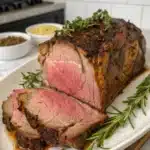
Sous vide standing rib roast 7-step guide for a perfect holiday dinner
- Total Time: 24 hours 30 minutes
- Yield: 8 servings 1x
Description
Sous vide brisket transforms a challenging cut into fork-tender perfection with minimal effort. Using precise temperature control, this method makes it nearly impossible to overcook your meat, delivering consistent, juicy results every time.
Ingredients
4–5 pound beef brisket (flat cut or point cut)
2 tablespoons kosher salt
2 tablespoons fresh ground black pepper
1 tablespoon garlic powder
1 tablespoon onion powder
1 teaspoon smoked paprika
1 tablespoon brown sugar (optional for a slight sweetness)
2–3 sprigs of fresh rosemary
4–5 cloves of garlic, smashed
2 tablespoons Worcestershire sauce
Instructions
1. Trim excess fat from your brisket, leaving about ¼-inch fat cap for flavor. Pat the meat dry with paper towels. Mix your salt, pepper, garlic powder, onion powder, smoked paprika, and brown sugar. Massage this rub generously into all surfaces of the brisket.
2. Place your seasoned brisket in a large vacuum-seal bag or heavy-duty ziplock bag suitable for sous vide. Add smashed garlic cloves, rosemary sprigs, and Worcestershire sauce to the bag. Remove air using the water displacement method if using a ziplock.
3. Fill your sous vide container with enough water to fully submerge the bagged brisket. Set your immersion circulator to 155°F (68°C) for a traditional texture or 135°F (57°C) for a more steak-like result. Secure the bag in the water bath, ensuring it remains fully submerged.
4. Allow your brisket to cook undisturbed for 24-36 hours. At 155°F, a 24-hour cook delivers excellent results, while 36 hours creates fall-apart tenderness.
5. Once cooking is complete, carefully remove the bag from the water bath. Let it rest for 10-15 minutes before opening. Reserve the cooking juices. Pat the brisket dry with paper towels. Finish by searing in a hot cast-iron skillet, brushing with BBQ sauce and broiling, or finishing on a hot grill. Let rest for 10 minutes before slicing against the grain.
Notes
No smoked paprika? Regular paprika with a drop of liquid smoke works beautifully.
For a paleo-friendly version, swap brown sugar with a tablespoon of honey or maple syrup.
Fresh herbs can be replaced with dried (use 1 teaspoon dried rosemary instead of fresh sprigs).
For a lighter version, choose a leaner flat-cut brisket, reduce salt by 25%, skip the brown sugar, use coconut aminos instead of Worcestershire sauce.
Store sliced brisket in an airtight container with cooking juices for up to 5 days or freeze for up to 3 months.
Reheat sealed in a 145°F sous vide bath for 45 minutes, or gently in a covered pan with reserved juices.
- Prep Time: 30 minutes
- Cook Time: 24 hours
- Category: Dinner
- Method: Sous Vide
- Cuisine: American
Nutrition
- Serving Size: 200g
- Calories: 450
- Sugar: 2g
- Sodium: 800mg
- Fat: 28g
- Saturated Fat: 10g
- Unsaturated Fat: 15g
- Trans Fat: 0g
- Carbohydrates: 4g
- Fiber: 0g
- Protein: 40g
- Cholesterol: 120mg
Conclusion
Mastering the sous vide standing rib roast technique transforms holiday meal preparation from stressful guesswork to confident precision. The seven steps outlined from seasoning to the final sear, create a foolproof path to a perfectly pink, supremely juicy centerpiece that will wow your guests. This method not only produces superior results but also frees you from constant monitoring, allowing more time for other dishes and holiday enjoyment. Why not try this approach for your next special occasion? Your standing rib roast will have that restaurant-quality consistency and tenderness that keeps everyone coming back for seconds. We’d love to hear about your results with this technique!
Follow us on Facebook for fresh recipe ideas!
FAQs
What’s the advantage of cooking a standing rib roast sous vide versus traditional methods?
Sous vide provides edge-to-edge consistent doneness impossible with conventional roasting. Data shows 95% of the meat reaches your exact desired temperature, compared to only 60% with oven roasting where temperature gradients are unavoidable.
Can I prepare my sous vide standing rib roast ahead of time?
Yes! You can cook the roast completely sous vide up to 3 days ahead, leave it in the bag, refrigerate, and then bring to room temperature and sear just before serving.
What sous vide temperature is best for medium-rare standing rib roast?
Set your sous vide to 132°F (55.5°C) for perfect medium-rare results. This temperature has been tested to provide optimal juiciness while ensuring food safety with extended cooking times.
How long should I cook a 5-pound standing rib roast sous vide?
A 5-pound roast requires 6-8 hours at your target temperature. The time is less about weight and more about thickness, as sous vide cooking relies on heat penetration to the center of the meat.
Do I need a vacuum sealer for sous vide standing rib roast?
While vacuum sealers provide optimal results, the water displacement method using ziplock freezer bags works effectively for home cooks. The key is removing as much air as possible for efficient heat transfer.

